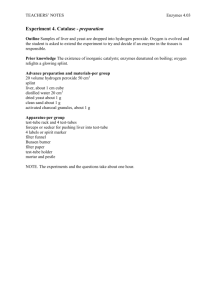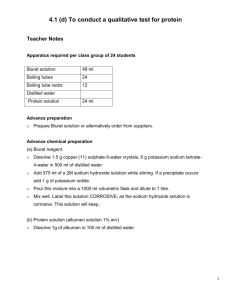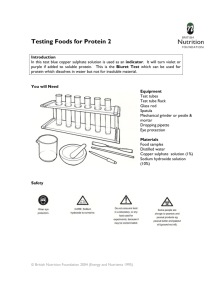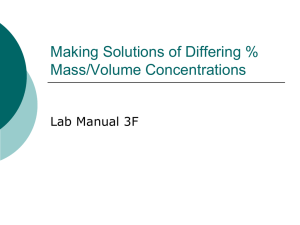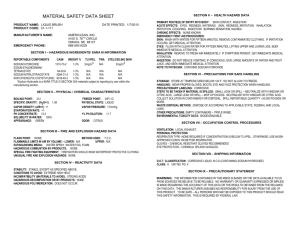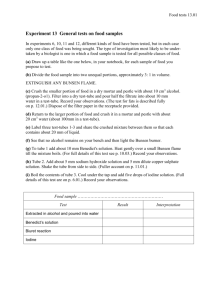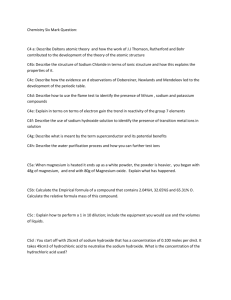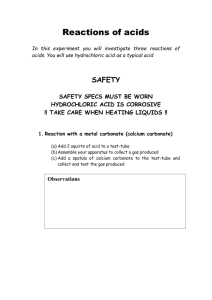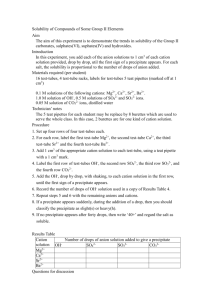11 Testing for protein
advertisement
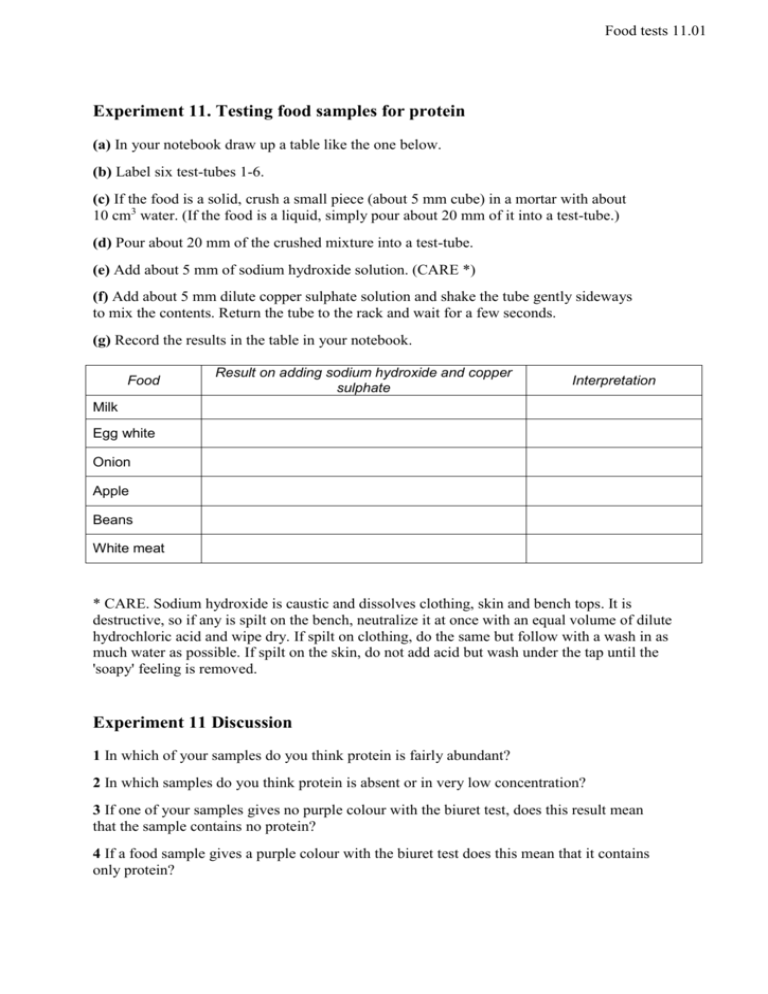
Food tests 11.01 Experiment 11. Testing food samples for protein (a) In your notebook draw up a table like the one below. (b) Label six test-tubes 1-6. (c) If the food is a solid, crush a small piece (about 5 mm cube) in a mortar with about 10 cm3 water. (If the food is a liquid, simply pour about 20 mm of it into a test-tube.) (d) Pour about 20 mm of the crushed mixture into a test-tube. (e) Add about 5 mm of sodium hydroxide solution. (CARE *) (f) Add about 5 mm dilute copper sulphate solution and shake the tube gently sideways to mix the contents. Return the tube to the rack and wait for a few seconds. (g) Record the results in the table in your notebook. Food Result on adding sodium hydroxide and copper sulphate Interpretation Milk Egg white Onion Apple Beans White meat * CARE. Sodium hydroxide is caustic and dissolves clothing, skin and bench tops. It is destructive, so if any is spilt on the bench, neutralize it at once with an equal volume of dilute hydrochloric acid and wipe dry. If spilt on clothing, do the same but follow with a wash in as much water as possible. If spilt on the skin, do not add acid but wash under the tap until the 'soapy' feeling is removed. Experiment 11 Discussion 1 In which of your samples do you think protein is fairly abundant? 2 In which samples do you think protein is absent or in very low concentration? 3 If one of your samples gives no purple colour with the biuret test, does this result mean that the sample contains no protein? 4 If a food sample gives a purple colour with the biuret test does this mean that it contains only protein? Food tests 11.02 Experiment 11 Testing food samples for protein Outline Food samples are crushed in water and the biuret test applied. Prior knowledge The biuret reaction (not essential). The caustic nature of sodium hydroxide. Advance preparation and materials Food samples as on p. 10.01 Beans, peas, etc. should be placed to soak the day before the experiment. The white meat can be chicken or fish; preserved dogfish meat will do. Boil the egg white with tap water to make a suspension; 10 cm3 egg white per 100 cm3 water is sufficient. Allow 5 cm3 per group. 2M or 10% sodium hydroxide solution 1 % copper sulphate solution 20cm3 per group Apparatus-per group small mortar and pestle test-tube rack and 6 test-tubes test-tube holder Bunsen burner 6 labels or spirit marker 6 watch-glasses (for food samples) Experiment 11. Discussion - answers 1 Meat and egg white should give a strong colour. 2 Milk and beans should give an indication of protein. Apple and onion should show little or no protein reaction. 3 Possibilities: (a) the sample contains no protein. (b) the sample does not contain enough protein to react. (c) it contains a protein which has not been extracted by the crushing in water. 4 The sample could contain other classes of food in addition to protein.

